Amethyst Deceiver
Very common and beautifully coloured, although the colour can be deceptive in photographs.
| Mushroom Type | |
| Common Names | Amethyst Deceiver (EN), Twyllwr Piws (CY), Lakówka Ametystowa (PL), Lila Pénzecskegomba (HU) |
| Scientific Name | Laccaria amethystina |
| Season Start | Jun |
| Season End | Nov |
| Average Mushroom height (CM) | 12 |
| Average Cap width (CM) | 6 |
Cap
Convex to flattened with depressed centre and even upturned edges, often becoming deformed with age. Deep purple/lilac when young fading to pale brown/tan.
Gills
Gills deep purple/lilac when young fading to pale brown/tan. Widely spaced, broad and irregular with shorter gills in-between.
Stem
Deep purple/lilac when young fading to pale brown/tan. Fibrous, usually twisted and sometimes hollow.
Possible Confusion
When young the deep purple of the Amethyst Deceiver is quite distinctive. Caution should be taken with older specimens however as the whole mushroom can fade and look more tinged then purple. The fading can make identification less sure as there could easily be a confusion with the potentially deadly Lilac Fibrecap (Inocybe lilacina), pictured, but this mushroom has off white or grey gills whereas the Amethyst Deceiver has the same colour in the cap, gills and stem.
Spore Print
White. Globose with spines.
Taste / Smell
Mildly nutty/mushroomy and keeps its colour when cooked so a bright addition to any meal.
Frequency
Common.



 (109 votes, average: 3.83 out of 5)
(109 votes, average: 3.83 out of 5)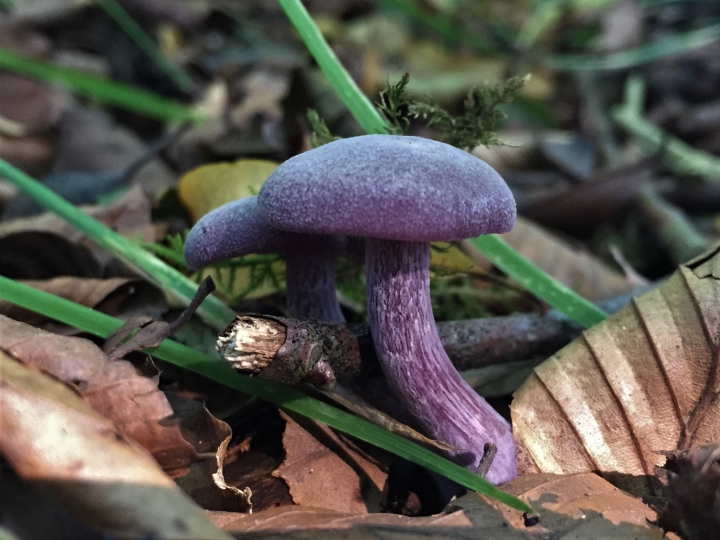















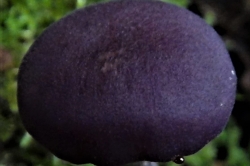
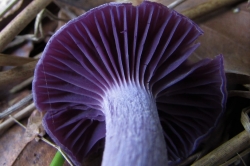
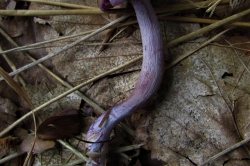
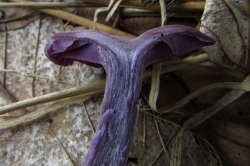
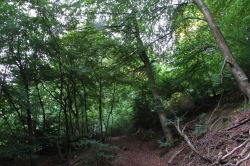
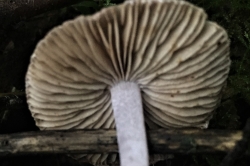




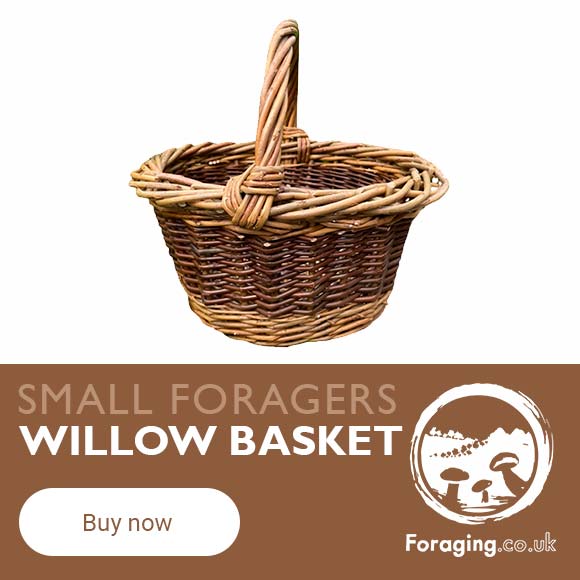

11 comments for Amethyst Deceiver
Do you know if these keep well if you dehydrate them?
The keep very well once dried but never re-hydrate to a beautiful purple again.
we have bone growing out bottom of our leaf litter compost hopper …..so it is safe to.leave yes? As we have a 2 year old dog?
Also a yellow flowered similar one where roots of silver birch are?
is that toxic for dogs please?
Best regards
Carole Middleton
We need to see photos of mushrooms to try and ID them. We need close ups of the cap, stem, gills and where they were growing. Send photos to [email protected]
Thanks for the info. Tried these for the first time today and they’re pretty good eating!
Found only a few of these in our local woodland and always wanted to find more; they’re delicious. Just visited a national trust woodland today and they were out in their hundreds! Mushroom stroganoff for dinner I think!
Today, very surprised to find such a bounty of them. Found my two biggest ever: cap of 10cm and another of 7cm. I’m going to take a crazy punt and see if I can’t make a mushroom bacon chowder with them.
Do you know if you can eat them raw?
We recommend cooking all wild mushrooms as they have not been grown in sterile conditions, also, many edible mushrooms need to be cooked before consumption as this destroys any harmful toxins.
Is there any other purple mashroom … those we found today have a bit brocken rims…and some a bit pale purple…
There are few different purple mushrooms, Inocybe lilacina, a poisonous mushroom, can look similar to Amethyst Deceivers but has grey rather than purple gills. Some of the Cortinarius mushrooms are purple but they are generally bigger and not known to be toxic but are inedible due their bitter taste. There are some other rarer purple mushrooms but as long as you stick to our identification for amethyst deceivers, you will be safe.